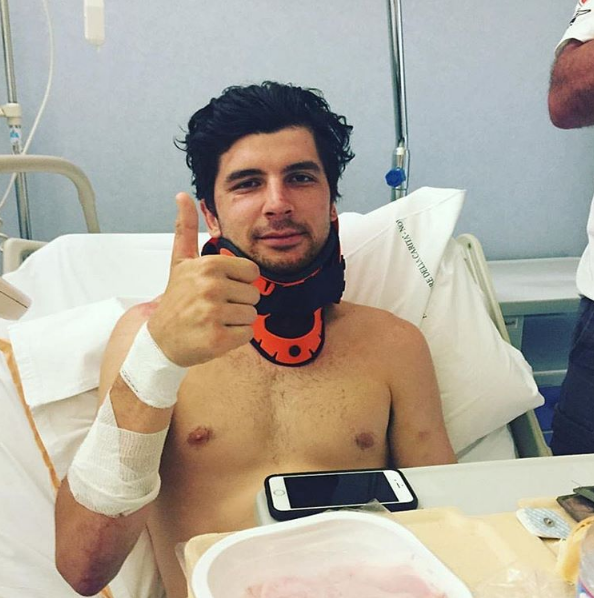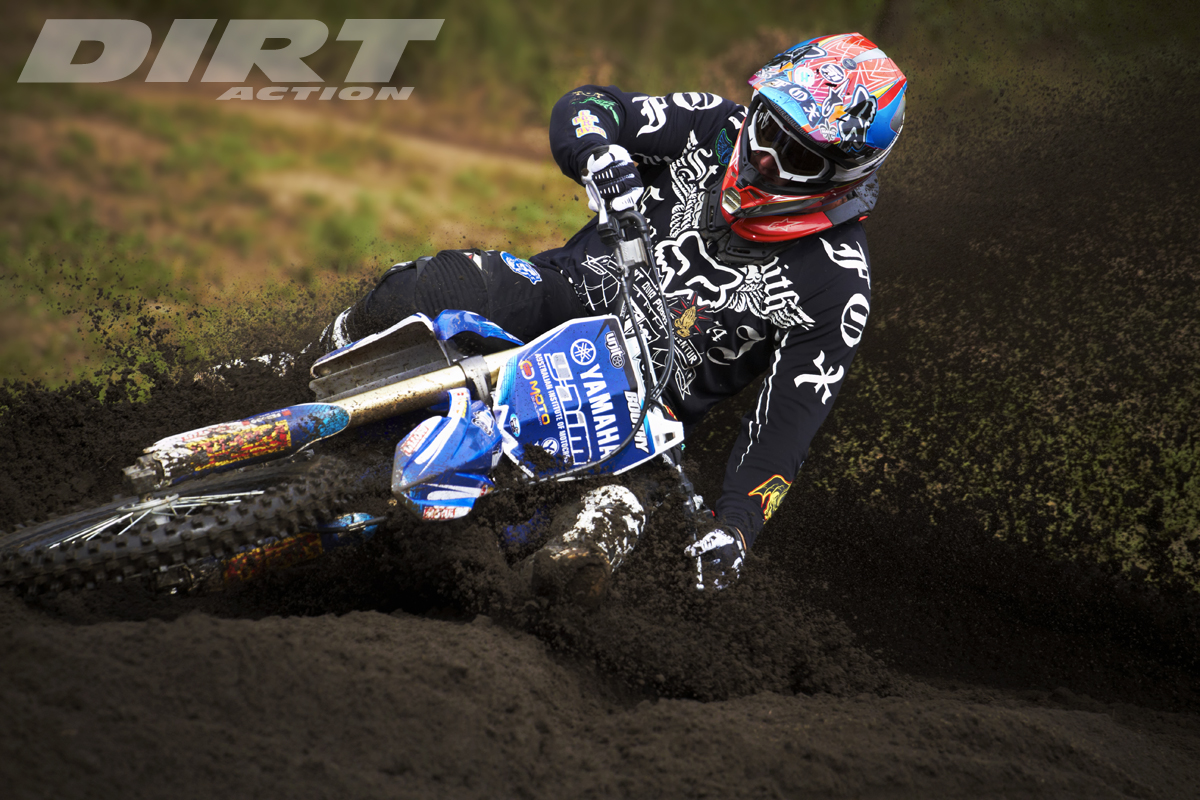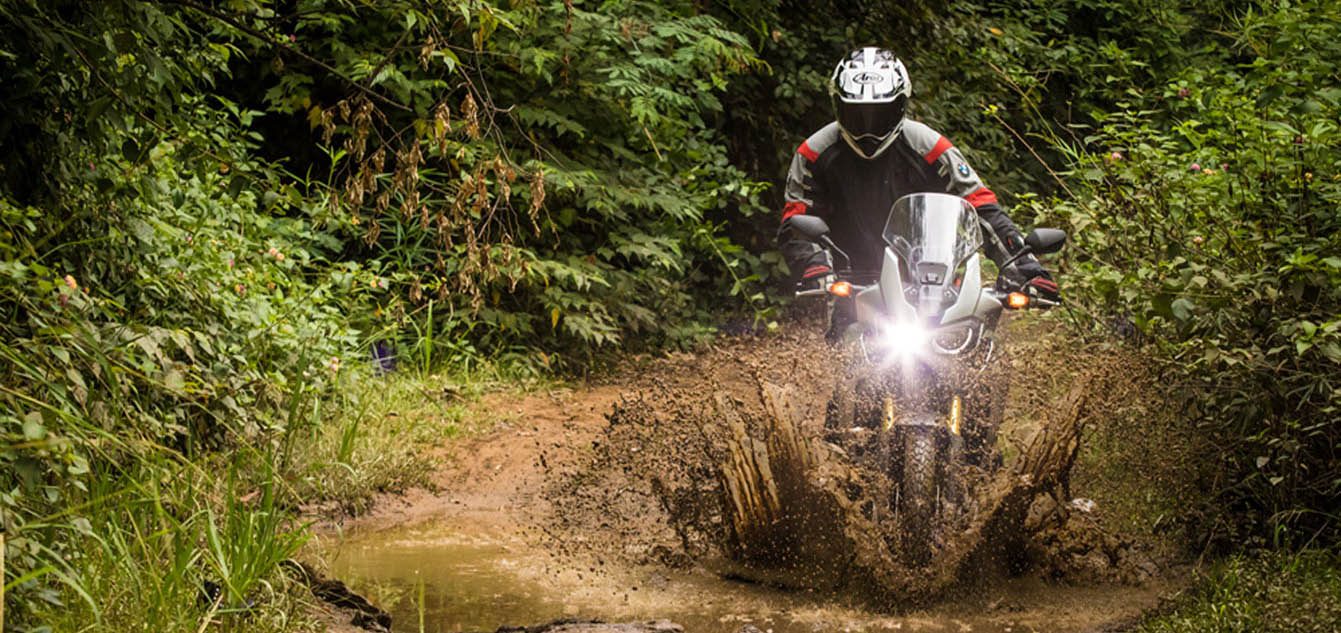
Honda’s Africa Twin is every bit the dirt weapon we hoped it would be. Big red is back!
STORY & PHOTOS DAMIEN ASHENHURST
With rare exceptions, bikes change in small increments these days and the chance to ride and test something truly new, where a manufacturer has really gone out on a limb, almost never happens. Some bikes just never change and you find yourself repeating what you’ve written over 20 years on a bike like the DR650 or, until recently, the WR250F — and of course Honda’s CRF450X.
So when we get hold of a bike that’s actually new, from the ground up — as in it didn’t exist this time last year — we get a little excited. In that respect, the Africa Twin is everything we’ve been waiting for. It’s new and it’s been a long time since Honda truly gave the adventure market a shake. This model has been teased so well over the past couple of years it’s left many frothing and drooling for so long in front of their computers that your neighbours probably think you’re spending your time looking at Red Tube and not a red bike.
And, for those of us of the offroad persuasion, a new Honda CRF1000L is a big deal. The motocross models have received updates and rebuilds constantly over the years but the trail/adventure crowd has either been buying a CRF that’s antiquated by current standards or trying to keep XRs going long past their intended use-by date. And of course the Africa Twin was never an official import to Australia. A small number made it in as backdoor imports but we had to read about the exploits of the rest in magazines.
So what do we make of this bike we’ve been busting to ride ever since those first sneaky glimpses were released? Let’s get into it.
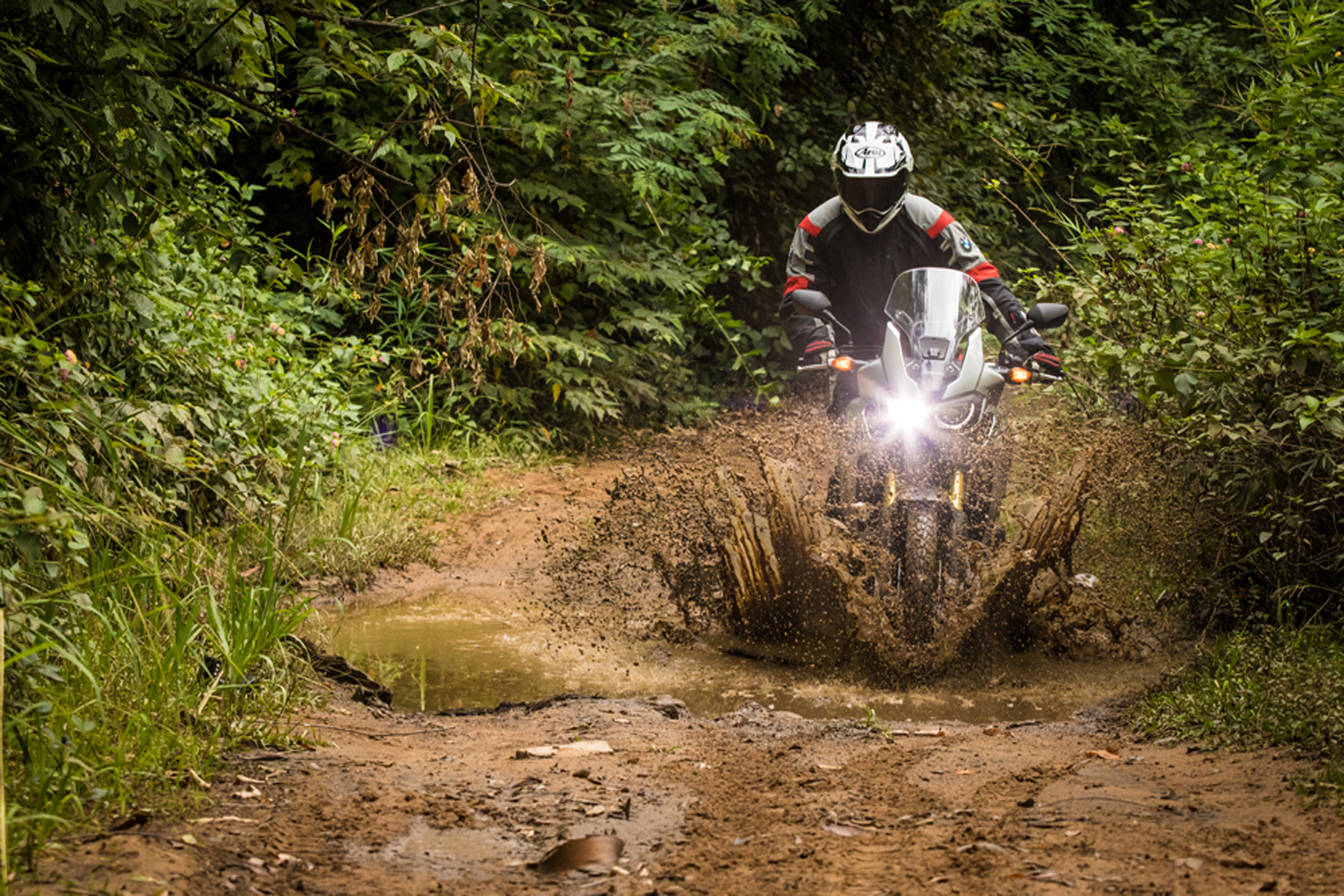
FIT & FEEL
I generally have to take a bit of time to get used to Honda ergos: that sensation of sitting right up on top of a bike isn’t my natural feel.
Not so with the Africa Twin; the bike was comfortable from the start with a near-perfect-width seat for me and that important handlebar, pegs and seat triangle was just right. There was no sensation of my 5/11 frame being cramped but also no reaching for the ’bars, either. This is so important on a bike that you could be sitting on for one hour to one week or more.
The choice of the parallel twin engine (previous models were V-twins) allows for a thin profile from the seat to the pegs, which pays off in so many ways and to my mind sways the preference from the V-twin to the parallel, which some purists may find offensive. It has one of the best feels — if not the best feel — of any adventure bike in that regard and gives you your first hint that Honda had a strong off-road focus in designing the Africa Twin for 2016.
The clutch is a slipper assist cable unit, which might raise a groan from some but, believe me, there’s no need for hydraulics here. I like the feel from a good cable clutch and the pull on the Twin is light and incredibly smooth with plenty of feel. This is an excellent clutch and it’s just the start of the many crucial details that Honda got right. The throttle is also a cable unit and so there’s no ride-by-wire and therefore no electronic cruise control.
There’s no need to remove the tank to access the two air filters, which sit on either side of bike. Just pop the front cowl off and you’ll also find a pretty interesting air intake system just underneath the headlight, which is nice and high up. Honda tells us the intake doesn’t rely on forced air and so resists totally dusting the air filters.
All the levers are generous — no searching frantically with your feet to find a stubby brake pedal or wishing you had size-four boots to hook under the gear lever. Up top, the front brake and clutch levers are long and wide and that kind of thing just makes it more perplexing why the Africa Twin has a set of the worst footpegs I’ve ever seen. The footpegs are way too small in width and length for dirt riding.
Once the key is turned, a good-looking and easy-to-read dash comes to life, offering fairly basic info due to the fact that the base model we tested is stripped of just about anything but the bare bones, so no electronic cleverness to be had here.
At a generous $15,499, this is where the Africa Twin starts, but for $16,999 you’ll get a bashplate, handguards, a centre stand, ABS and traction control as well as a set of LED blinkers. Lay down another $1000 and you’ll get all that plus anodised bar weight ends and the much-talked-about dual-clutch technology (DCT), which is the second generation of the auto shifting system also found on the VRF1200 road tourer.
So, representing the starting point, the model we tested is devoid of many of the bits and pieces we expect to see on an adventure bike but it’s offered at a price that’s hard to ignore. We’ll get into the pros and cons of that choice a little later.
Although it’s not the most important factor, it must be highlighted that the exhaust note is mighty. It sounds like a distant bombing of a small town. It’s not overly loud at all but it’s deep and has purpose. You can barely hear it on the trails but it’s one of those sounds that makes you want to rev it compulsively whenever you stop.
1000CC GREATEST HITS
The engine is a curious beast. It doesn’t feel fast off the mark in a world full of mighty 1200s and I suspect road riders might call it sluggish. I only ever ride roads to get to more dirt but I know from experience that Suzuki’s V-Strom 1000 feels fairly similar.
The gearing is just right on the dirt for anything from climbing rocky, slippery hills to punting it out of a corner and bolting to 90km/h in the blink of an eye. It’s easy to control in a slide and doesn’t mind being revved hard with no discernible hole in the output right the way through and with an ability to retain traction on all manner of terrain.
The six-speed gearbox has a positive feel with plenty of feedback and accepts throttle-down clutchless shifting. There’s no great gap between second and third and I found much of the best times were to be had at around 4000rpm, both on the dirt and in sixth on the freeway. I’d fiddle with dropping a couple of teeth on the rear sprocket if regular freeways were my thing.
The Africa Twin certainly isn’t an explosive, powerful beastie but I don’t want that. I want a linear delivery, I want torque and traction and I want to be able to control it on anything from rocks to sand to wet red clay. Actually, I can’t control anything on wet clay so that’s probably asking too much.
The Twin will pop a wheelie no problem but a bike that throws down masses of wheel spin is no use as an adventure ride. It’s a tough ask because we’re talking about the biggest dirt-going vessels with 1000 to 1200cc, but in this case the claimed 93.8hp tips the scales in favour of the dirt sections — and we’re loving that because this engine is stupid fun. It revs hard and goes a long way to making the Twin feel just like a huge dirtbike instead of a compromised road bike.
And, believe me, pulling it up is pretty easy because the brakes are simply insane — particularly the twin disc front brake, which took me a while to really get used to. And when you carry memories of dull CRF-X brakes and then grab a handful of these bad boys, your world view changes pretty quick from trees passing by in a blur to coming to a stop in bugger-all time.
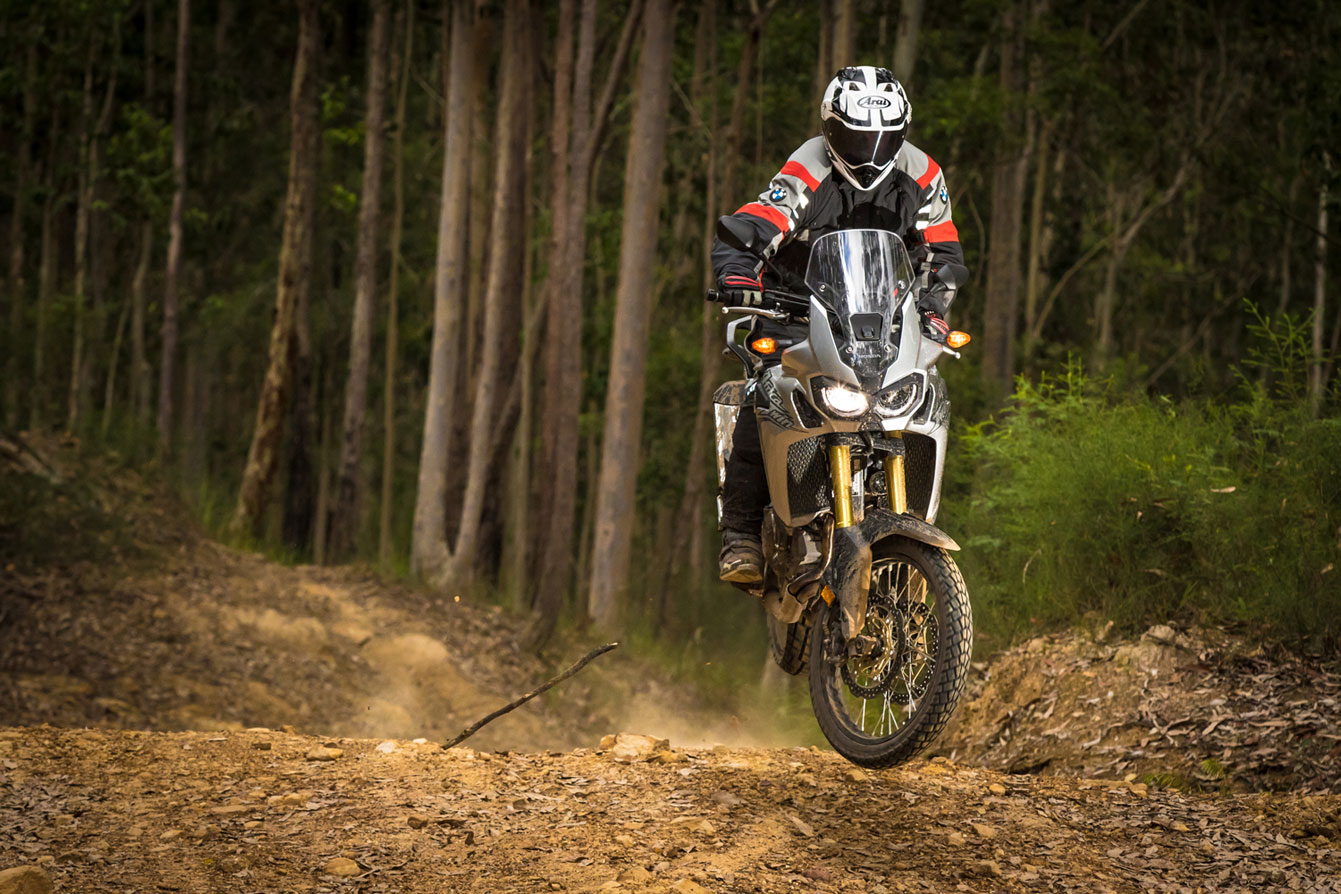
BUSTING THE BUMPS
So, while the Africa Twin’s engine can be matched and in some cases beaten by the competition in a purely numbers game (to be fair, we’re talking predominantly about 1200s, too), its handling is tough to beat. In fact, I can’t think of an adventure bike that can go that hard on the dirt — but, in saying that, I haven’t ridden a KTM adventure bike yet.
The Honda’s balance is superb whether under acceleration or heavy braking and as I punted it down some rough, rocky tracks and found I only slowed down at all because I didn’t have a bashplate, not because things got funky. The front is planted and offers plenty of feel and the back end didn’t do a damn thing I didn’t see coming. The suspension took on some tracks with ease that I normally trailride on an enduro bike and the steel chassis (with six engine mounts) allows for quick steering but also stability at speed.
The handling is the bike’s drawcard. The engine is good but it has clear competition, whereas there are few bikes of this size that offer this sort of handling in the bush. In my opinion, for dirt riding, this is the best-handling package when you want to prioritise speed but not completely lose comfort at lower speeds. It’s hard to find a comparison for the light feel, slim ergos and solid but forgiving suspension. Even its extremely tight turning circle is a plus when you’re looking to explore narrow trials and throwing down a bush turn is no drama at all. Not so easy on a 1200.
I honestly haven’t ridden a big bike that feels as stable and dirtbike-like as the Africa Twin.
One thing that deserves to be mentioned here is that the Africa Twin can be ridden by both novice and advanced riders alike. With an engine that’s not imposing but happy to rev, both can get what they want from it. The seat height is fairly low and the handling excellent at any speed.
OPEN THE GARAGE
The base model we tested has limiting factors. There’s no 12-volt socket, no handguards or bashplate. An adventure bike should have those three things whether it’s a base model or not. Heated handgrips would be nice, too (you don’t think you need them until you need them and then you’d kill to have them).
But by forgoing these things the Africa Twin comes in at $15,499, which is great value for a starting point and no doubt raised a sweat among competing manufacturers. You can fit the bike out at a later date with either genuine or aftermarket accessories and we can live without ABS and TC if we had to — but the protective gear is crucial. The pipes sit low and the oil filter is vulnerable, so get that stuff covered to avoid disaster.
That said, given what the bike is designed to do and just how fast you can ride the Africa Twin, I’d stump up for the $16,999 model and get at least some of the protection it needs already fitted and then add crash bars to the mix.
The DCT model is a mystery to us at this stage. The last bike we rode with an auto gearbox was a Husky 380 and that was nasty. From what we understand, the DCT is excellent and a genuine option for off-road, but until we get a chance to ride it we can’t make a call.
So how good is the Africa Twin? It’s very, very impressive. It’s a hell of a lot of fun and it is simply one of the best adventure bikes we’ve ever ridden. With a fuel range of around 350km (depending how you ride it — we got a lot less and slightly more on different rides), it’s capable of chewing on long days but the 18.8-litre tank will need to be augmented with some extra fuel on the truly big trips.
That aside, we just love the Africa Twin. This has the potential to go down as one of the great Hondas if time proves it to be truly reliable long term. The build quality suggests that won’t be a problem and, to answer the age-old question asked of bike journos — would we buy one? — bloody oath, in a heartbeat!
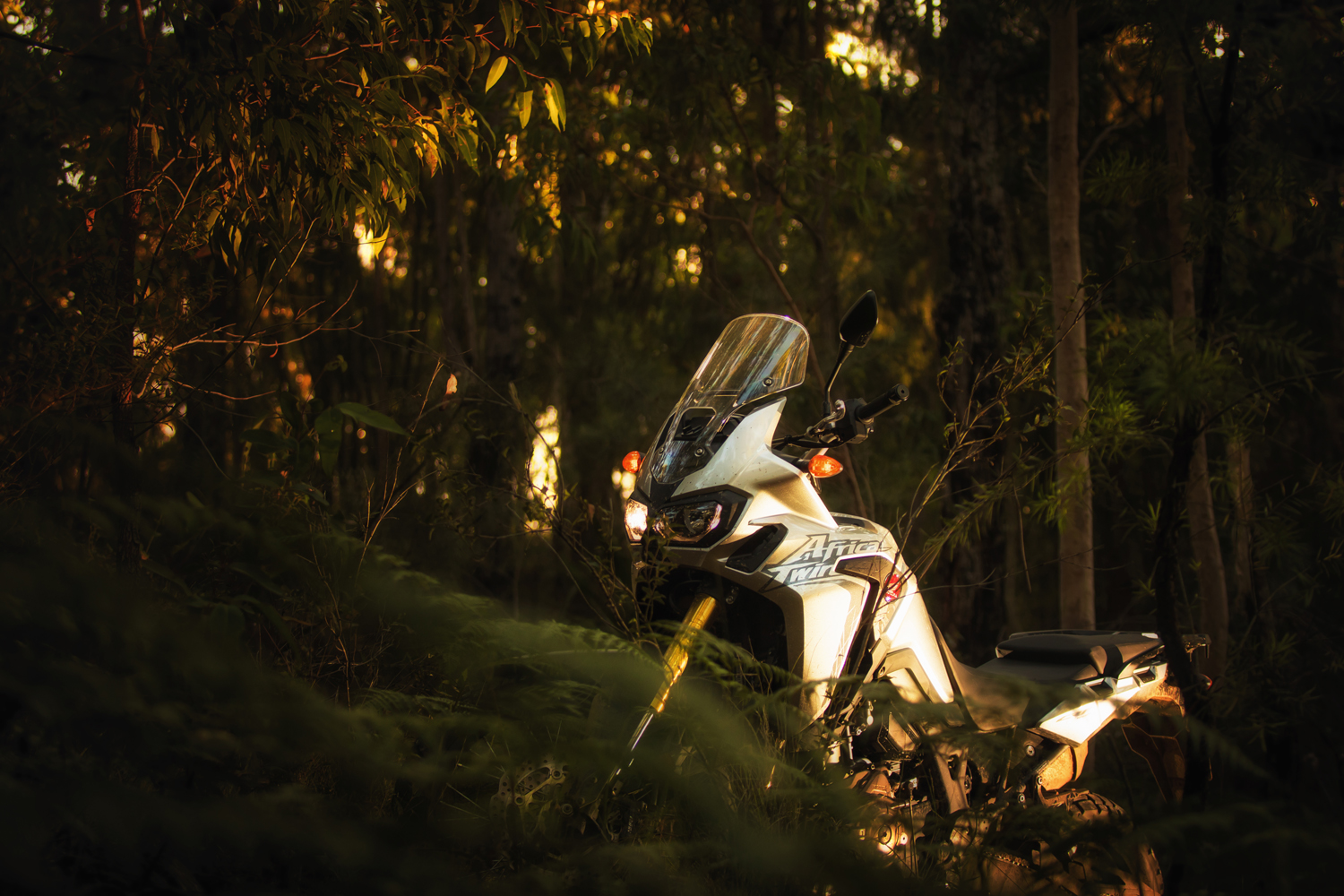
TECH SPECS
- Engine: liquid-cooled, 8-valve, 998cc parallel twin
- Bore/stroke: 92×75.1mm
- Power: 69kW (93hp) @ 7500rpm
- Torque: 97Nm (72ft/lb) @ 6000rpm
- Transmission: 6-speed manual or DCT semi-auto
- Dry weight: 208kg (212kg with ABS, 222kg with Dual Clutch Transmission)
- Wet weight: 228kg (232kg with ABS, 242kg with DCT)
- Fuel capacity: 18.8L
- Length/width/height: 2335×875×1475mm (92.7×4×58in) STD, 2355×930×1475mm (92.7×36.6×58in) DCT
- Wheelbase: 1575mm
- Seat (Standard/Relaxed): 870/850mm
- Clearance: 250mm
- Tyres: 90/90-R21; 150/70 R18
THE GOOD STUFF
- Thin feel
- Tractable power
- Air filter access without removing tank
- Dirtbike handling
- Adjustable seat
THE BAD STUFF
- Tiny footpegs
- Non adjustable windscreen
- No heated handgrips
- No 12-volt socket
- Genuine parts prices are high



